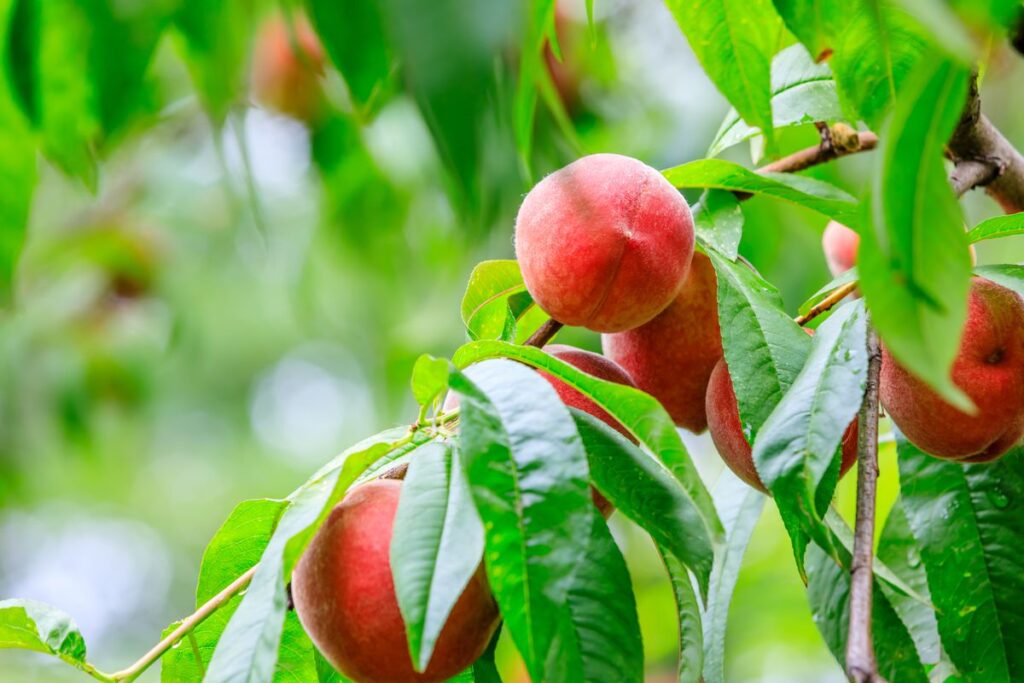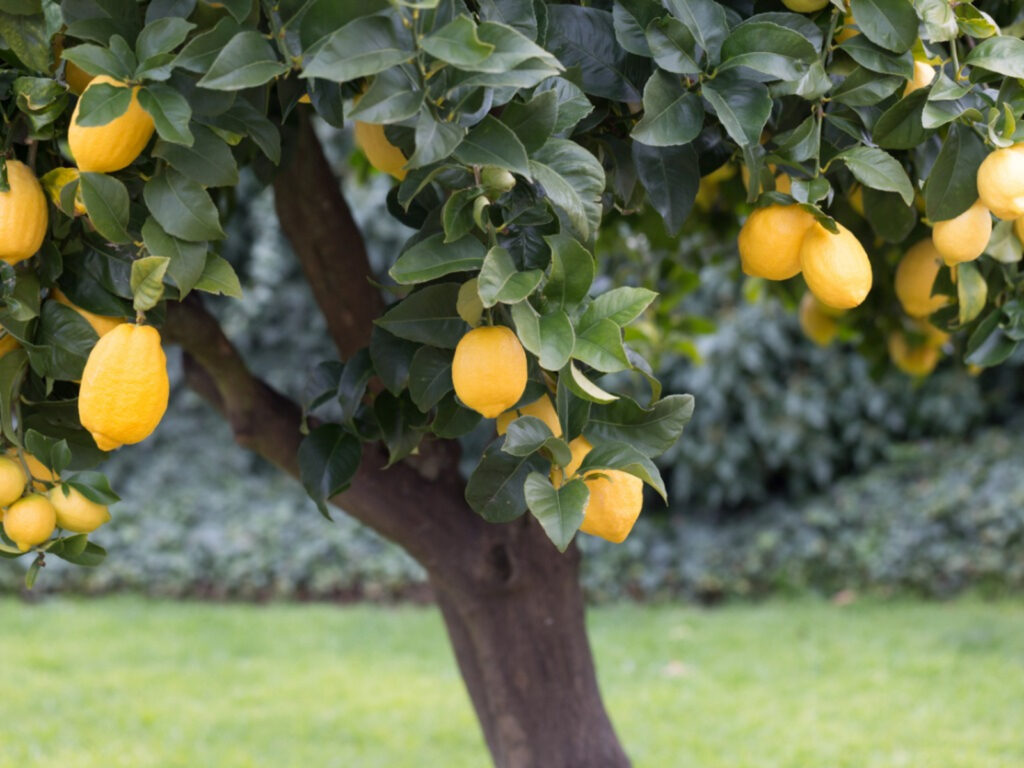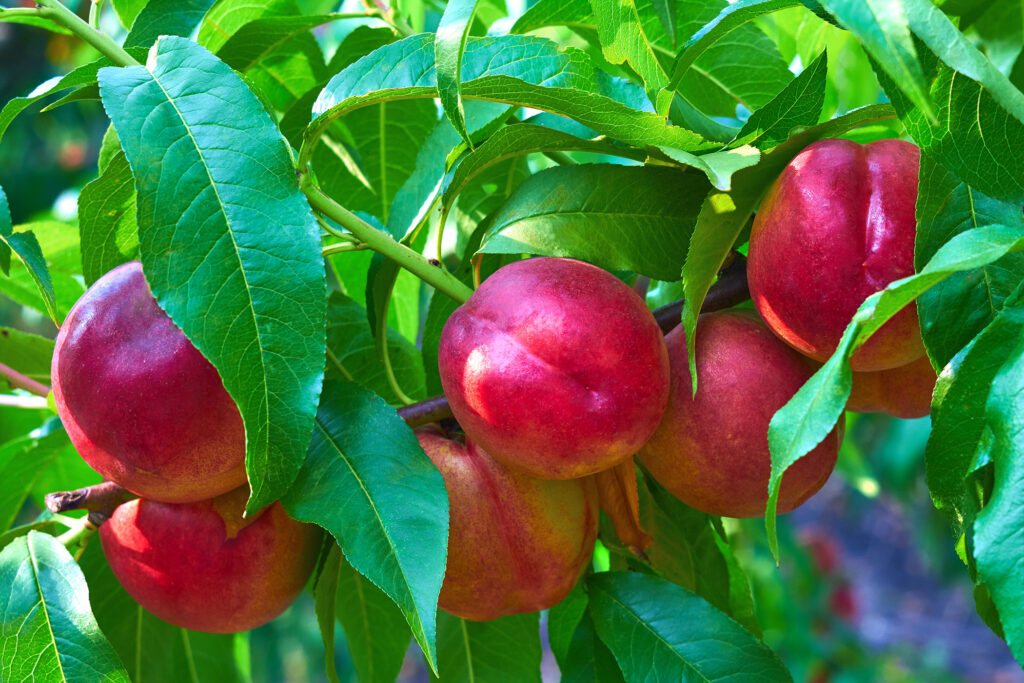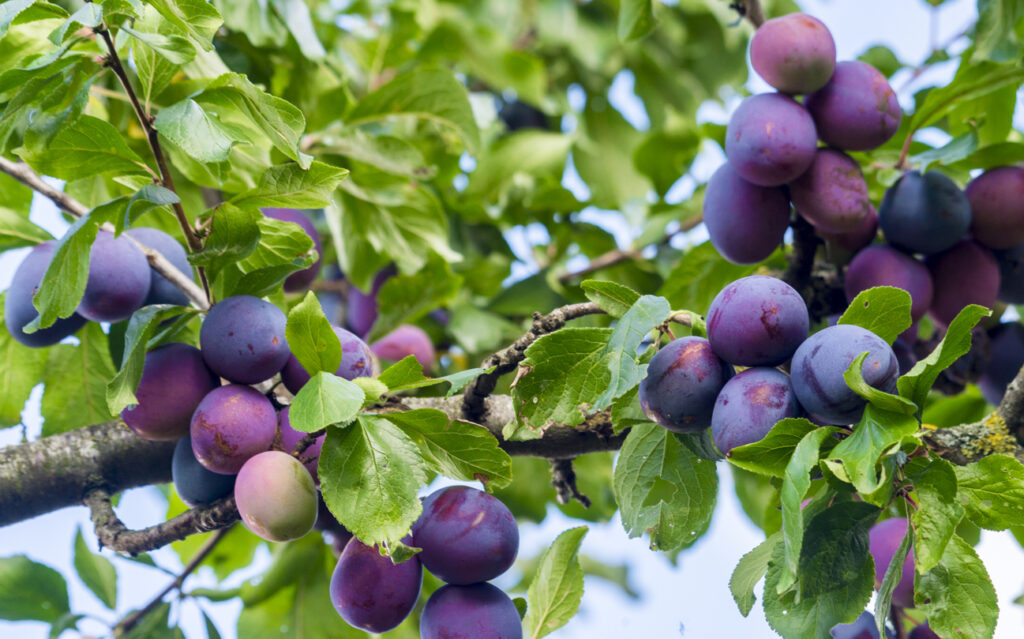Cross-pollination is common across areas with temperate climates. This process happens when pollen from an entirely different plant variety has to be transferred to the stigma of the designated flower. If this same pollen doesn’t land on the stigma, the plant can produce no fruit. This is necessary to ensure genetic variability among plants.
But there are fruit varieties that can still bear fruit with pollen transferred from the same plant variety or tree. These are known as self-fruitful or self-fertile varieties and are the most convenient to grow in small gardens. Here is a list of self-fertile fruit trees that you can take care of in your backyard:
1. Peach Tree

Muffins, pies, jams, and cobblers taste much better when made from homegrown, sun-ripened peaches. Peach trees are available from dwarf to standard sizes, making this fruit tree a sustainable option for backyard gardens. And if given enough attention and care, peach trees can give your family delicious, luscious fruits for the following years to come.
Peach trees will require regular fertilizing, spraying, and pruning from you to make them much healthier and more productive. You must keep weeds and grass away from your tree surroundings that might compete for mulch, nutrients, and water. Visit here to Learn More.
2. Apricot Tree
Crimson orange, velvety-skinned apricots have been part of important dishes in several cuisines. Apricot trees are suitable to grow in most western regions and states with plenty of warmth and sunshine. Being a Mediterranean-grown crop, apricots thrive well during spring and summer, where there is enough heat and water supply.
Like the other stone fruits, such as cherries, peaches, and plums, apricots can grow from the stone itself. The fruit is essentially trained on to central leaders or open centers. During harvest season, you can see its spring flowers and decorative fruits gracing your backyard.
3. Lemon Tree

Lemons are known for being cold-sensitive among all the other citrus varieties. Due to this unique condition, you should plant your lemon trees by the southern side of your house as the plant needs protection from the first frost. You also need to give them full sunlight to ensure adequate growth.
While this citrus variety tolerates pretty much anything, ranging from poor soil to well-drained, acidic ones. You must set your lemon tree a bit higher than the ground and dig a shallower soil the length of a root ball. You may then place your lemon tree in that hole and start replacing the soil. Make sure to water them once a week.
4. Pear Tree
Pear trees are a popular choice for home gardens for it being low-maintenance fruit trees. They also have beautiful flowers, making them suitable to grow in smaller spaces. This fruit tree is also as hardy as an apple tree and tolerates pests and diseases very well.
When growing one in your backyard, make sure that you pick a spot where your pear tree can get around six to eight hours of direct sunlight. It is best to plan how to take care of them ahead, even if you only have the sapling yet. Make sure to water them once or twice a week until your pear tree’s roots establish themselves in the soil.
5. Nectarine Tree

This summer-growing fruit tree with an autumn harvest has smoother skin and is a bit smaller than peaches. You can eat nectarines raw, baked into cobblers and pies, and a great addition to fruit salads.
Growing one in a more southern area includes constant watering in hotter seasons. Young nectarine trees will require half as much fertilization as mature trees. Make sure to thin its branches during winter to encourage fruit productivity.
6. Sour Cherry Tree
As compared to sweet cherries, sour cherries taste more like a tart. The fruit is usually cooked into pies and jams or turned into fresh juices. You can expect a harvest from your homegrown cherry trees early in the spring and can actually reach around 20 feet tall. It is crucial that you plant your sour cherries in well-drained soil and put them under full sun.
7. Plum Tree

Plums will always be a staple in every home garden. Not only do they make a delicious jelly or jam, but growing plum trees can also be extremely rewarding. As long as you give plums everything they need, taking care of them won’t be too difficult. You only need to place them in well-drained, gritty soil and under full sun to thrive well.
You also have to familiarize yourself with three different plum trees: Damson, European, and Japanese. Which variety is suitable for you will depend on which region you live in and your preference as a gardener.
8. Blueberry Bush
When growing blueberry bushes at home, you must remember that they require a very low pH balance to thrive well. You may consider growing your blueberries in containers or tubs that you can bury in your backyard.
This will help in containing highly acidic soil that your plant needs. You can start planting one around early to mid-spring. But patience is necessary when growing blueberries as it might take three to four years before its bushes produce fruit.
9. Fig Tree

Figs are among the lushest fruits on the Earth, making it more pleasurable for you to grow in your backyard. During warmer seasons, you can pluck your figs and enjoy a healthy yet delicious no-fuss dessert at your porch.
You must keep your fig tree safe from a frosty environment and cold winds to ensure the best growth. But it might be easier for you to protect your fig from the cold if you try training it as a bush or a shrub. Make sure to prune the tree before it emerges back from its dormancy.
10. Pomegranate Tree
Pomegranates have seeds with juicy pulp and smooth, leathery red-pink skin that circles its edible arils. Gardeners don’t only grow this fruit tree for its delicious fruit, but the plant also makes a delightful ornamental specimen before pomegranate fruits come out. You can train them as a small tree when you have a smaller area for gardening in your home.
Takeaway
If you have a smaller garden area, planting two trees so you can harvest fruits may be a little too inconvenient and space-consuming. But with this list of self-fertile fruit trees that can pollinate all by themselves, you don’t have to worry about tighter backyard space anymore.






